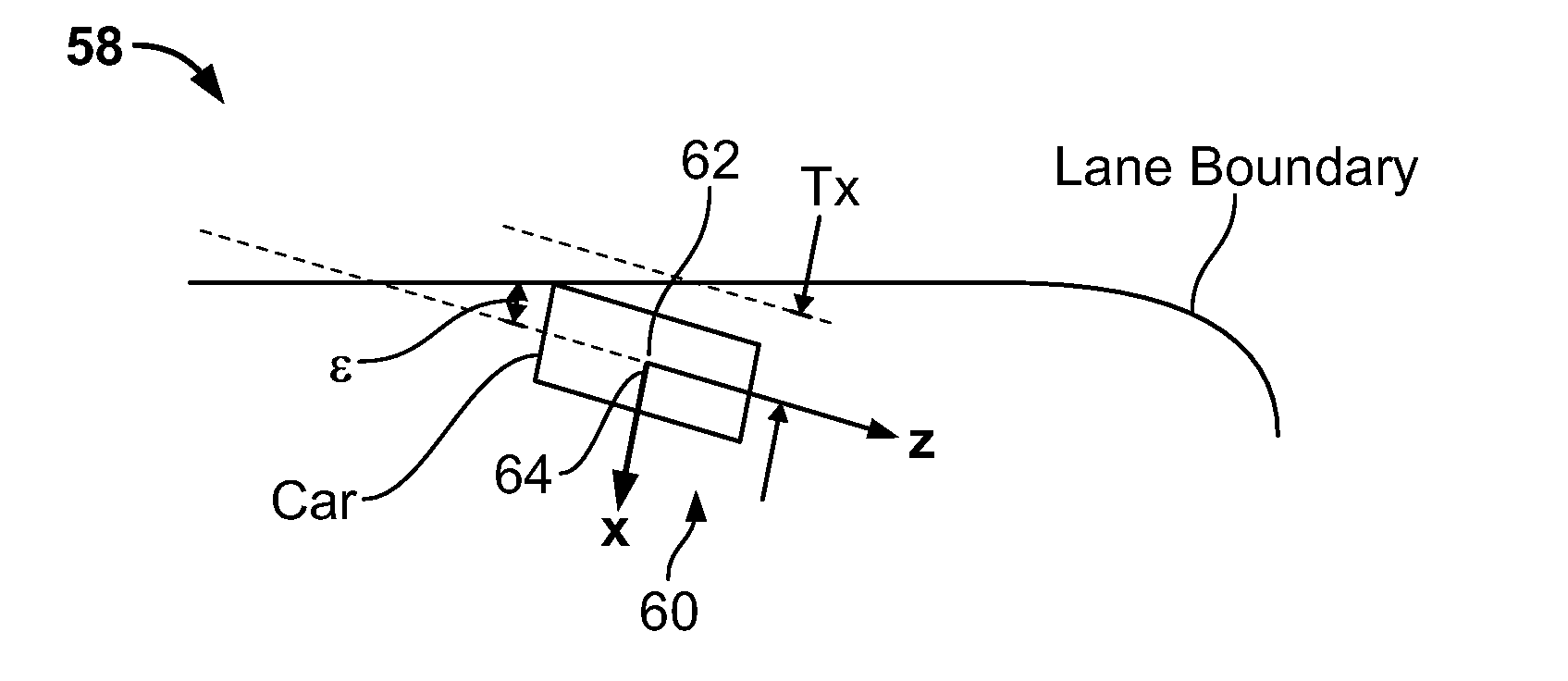Radar guided vision system for vehicle validation and vehicle motion characterization
a technology of guided vision and vehicle validation, applied in the field of vision systems, can solve the problems of host vehicle executing hard braking, acc and fcw systems showing poor performance, and undesirable for a host vehicle to brake quickly and hard
- Summary
- Abstract
- Description
- Claims
- Application Information
AI Technical Summary
Benefits of technology
Problems solved by technology
Method used
Image
Examples
Embodiment Construction
[0033]Referring now to FIG. 1, there is shown a radar-guided vision system 10, constructed according to an embodiment of the present invention. By way of a non-limiting example, the system 10 receives radar data from a radar system 12 and video from a camera 14, respectively. The camera 14 can be, for example, a digital camera such as a Guppy camera with a 640×480 CCD sensor and a 25 degree FOV lens. The system 10 can also include a computing platform 20. The computing platform 20 may include an embedded system (e.g., an Intel platform with DUO (1.83 Ghz) processor) comprising one or more processors 22 which includes a bus system 24 (e.g., an on board CAN bus system) which is fed by a video data stream 26 and a radar data stream 28 via the one or more processors 22 or directly to a computer-readable medium 29. The computer readable medium 28 can also be used for storing the instructions of the system 10 to be executed by the one or more processors 22, including an operating system, ...
PUM
 Login to View More
Login to View More Abstract
Description
Claims
Application Information
 Login to View More
Login to View More - R&D
- Intellectual Property
- Life Sciences
- Materials
- Tech Scout
- Unparalleled Data Quality
- Higher Quality Content
- 60% Fewer Hallucinations
Browse by: Latest US Patents, China's latest patents, Technical Efficacy Thesaurus, Application Domain, Technology Topic, Popular Technical Reports.
© 2025 PatSnap. All rights reserved.Legal|Privacy policy|Modern Slavery Act Transparency Statement|Sitemap|About US| Contact US: help@patsnap.com



